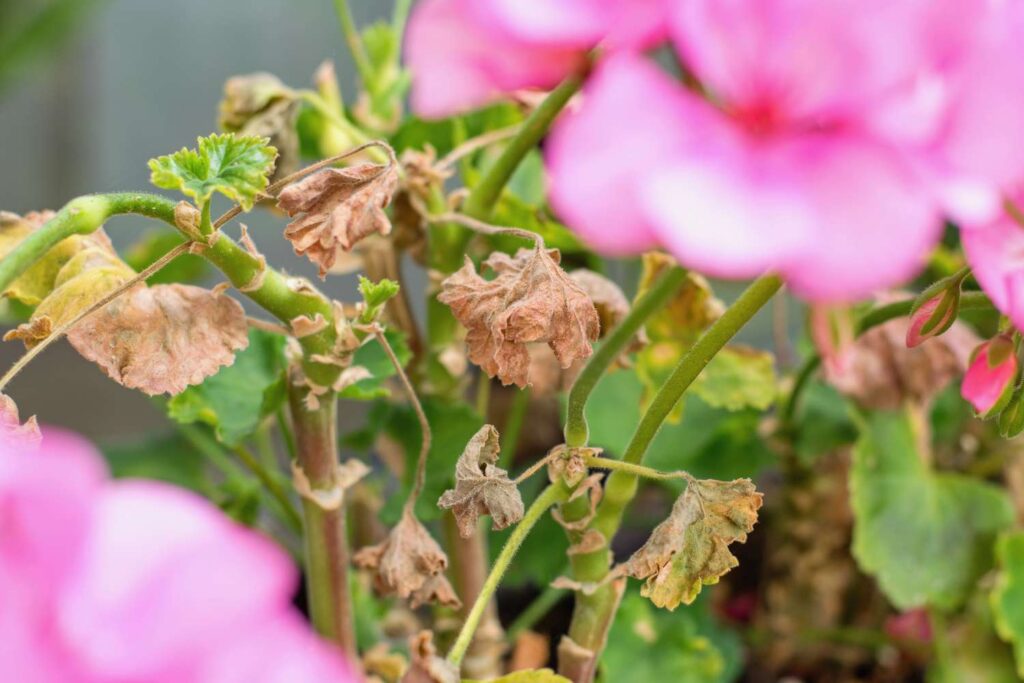
Why Are My Geranium Leaves Turning Brown
Geraniums, with their vibrant blooms and lush foliage, are a popular choice for gardens and indoor plant enthusiasts alike. However, even the most well-cared-for geraniums can sometimes develop issues, and one of the most concerning problems for growers is the browning of their leaves. Understanding the underlying reasons behind this phenomenon is crucial for maintaining the health and vitality of your geranium plants.
Understanding Geraniums
Before delving into the specifics of why geranium leaves may turn brown, it’s essential to have a solid grasp of what geraniums are and the conditions they thrive in. Geraniums, scientifically known as Pelargonium, are flowering plants native to South Africa but now cultivated worldwide for their ornamental value. These plants are characterized by their distinctive foliage and clusters of colorful flowers, which come in a variety of hues ranging from vibrant reds and pinks to softer pastel tones.
To ensure optimal growth and development, geraniums require specific growing conditions. They prefer well-draining soil with a slightly acidic to neutral pH and thrive in locations with ample sunlight. While they can tolerate a range of temperatures, they generally prefer moderate to warm climates and may suffer in extreme cold or heat. Additionally, there are numerous varieties of geraniums available, each with its own unique characteristics and requirements, so it’s essential to choose the right type for your specific environment and preferences.
Causes of Brown Geranium Leaves
Brown leaves on geranium plants can be attributed to a variety of factors, ranging from improper watering practices to environmental stressors and pest infestations. Understanding these potential causes is key to diagnosing and addressing the issue effectively.
Watering issues are a common culprit behind brown geranium leaves. Overwatering can lead to root rot and suffocation, causing the leaves to turn brown and wilt. On the other hand, underwatering deprives the plant of essential moisture, leading to dehydration and leaf discoloration. Additionally, the quality of the water used can impact the health of geraniums, with chlorinated or heavily mineralized water potentially causing leaf damage over time.
Environmental factors such as sunlight exposure, temperature fluctuations, and humidity levels can also affect the condition of geranium leaves. Too much direct sunlight can scorch the leaves and cause them to turn brown, while inadequate light can result in stunted growth and pale foliage. Temperature extremes, especially sudden changes, can stress the plant and lead to leaf discoloration. Similarly, low humidity levels can cause the leaves to dry out and turn brown, especially in indoor environments with artificial heating or air conditioning.
Pests and diseases pose another threat to geraniums, with various insects and pathogens capable of causing damage to the leaves. Common pests that affect geraniums include aphids, spider mites, and whiteflies, which feed on the plant sap and cause wilting, yellowing, and browning of the leaves. Fungal and bacterial diseases, such as powdery mildew and bacterial blight, can also lead to leaf discoloration and deterioration if left unchecked. Implementing preventive measures and timely intervention is crucial for managing these issues and preserving the health of geranium plants.
Remedies and Prevention
Addressing the underlying causes of brown geranium leaves requires a combination of remedial actions and preventive measures tailored to the specific needs of the plants.
Adjusting watering practices is often the first step in remedying brown leaves caused by moisture-related issues. Ensuring proper drainage in the soil, watering consistently but not excessively, and using clean, filtered water can help maintain optimal soil moisture levels and prevent root rot and dehydration. Investing in a moisture meter can also aid in monitoring soil moisture levels and preventing over or underwatering.
Environmental control is equally important in preventing leaf browning in geraniums. Providing adequate sunlight by placing the plants in a location with the right amount of light exposure for their specific needs can help prevent sunburn and leaf damage. Shielding the plants from extreme temperatures, either by moving them indoors during periods of intense heat or cold or using protective coverings, can mitigate stress and maintain leaf health. Additionally, increasing humidity levels, especially in indoor environments, through methods such as misting or using a humidifier, can help prevent leaf desiccation and browning.
Effective pest and disease management strategies are essential for preventing and addressing brown leaves caused by infestations and infections. Regularly inspecting the plants for signs of pests or disease symptoms, such as yellowing or curling leaves, sticky residue, or visible pests, allows for early detection and intervention. Employing natural remedies such as neem oil or insecticidal soap can help control common pests without harming the plant or the environment. Implementing proper sanitation practices, such as removing and disposing of infected plant material and maintaining clean growing conditions, can help prevent the spread of diseases and minimize the risk of recurring issues.
Conclusion
In conclusion, brown leaves on geranium plants can be indicative of various underlying problems, ranging from watering issues and environmental stressors to pest infestations and diseases. By understanding the causes of leaf browning and implementing appropriate remedial measures and preventive strategies, growers can effectively manage this issue and maintain the health and beauty of their geraniums. With proactive care and attention to detail, you can ensure that your geraniums thrive and continue to delight with their vibrant blooms and lush foliage for years to come.




